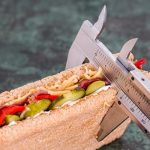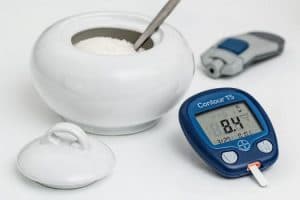BMR – basal metabolic rate – is one of those numbers we love to know….right? you say no; why not? don’t you know that if you know this number, you know how much to eat, or not to eat, to manage your weight? don’t you know that, if you know this number, you’ll know why you’re not losing, or why you’re gaining, weight? and don’t you know that, if you do the math, you’ll automatically and remarkably if not magically be able to lose those last 5 lbs just by following the yellow brick road?
my answer is no way! in a NSCA article on line – http://www.nsca-lift.org/Perform/articles/080603.pdf – the author promotes the value of calculating with medical equipment or estimating with the formulae included in the text your BMR. she gives reasons, very rational ones, as to why and how this number is useful. and to the extent you’re working with motivated athletes, or health-challenged patients, this number is very useful. it allows the trainer the ability to more closely supervise caloric intake based on needs, be they athletic or simple existence. but for the majority of people, this number is insignificant if not a pain in the rear. here’s why.
once you calculate your BMR, you know how many calories you need to lie in bed and stay the same weight. if you intend to do that, or are sick and can’t do your usual activities, this may be useful. but you will lose muscle mass, or lean body mass – LBM. so, at the same weight, a week or two later, your LBM is down, your FM – fat mass – is up, and your weight is close to the same. of course, studies show a very hi protein diet will modulate these changes but that’s not why you want to know this number. the reason you want it is so you can then add calories based on your daily activities: baseline eating, sitting at a desk, driving to work, and going to the bathroom, plus other ADL’s, may add up to another 300 cals/day (more if you weigh a lot, or move a lot, less otherwise). then your fitness activities or any other physical activities – do you park far from the store or close? – have to be factored in, and adjusted for gender. let’s just say it’s another 400 cals/day. so now you add BMR + 300 + 400 = daily caloric needs. great – but now you have to accurately add up all the calories you currently eat and start adding all the calories you need to eat to meet this magic number. this is good for a 3-day food record but a daily version of this and, guess what? you’ll be sitting too long to burn calories.
my simple advice: if you’ve been gaining weight, take each dish/plate/bowl of food you’ve been eating, and toss out a fourth or third; save it for another meal or trash it. it’s likely you’ve started adding excess calories to your life in a variety of forms, some of which may be simply good, real food. so, be it a coke, a wine glass, or a salmon salad, if you’re eating too much such that you’re gaining weight, then cut down on what you eat and drink but have 2/3rd or 3/4ths so you are eating what you like. if you’re still gaining, after a few weeks- it may take the body time to adjust – then cut again. most likely, you will start the long, slow weight loss that may not satisfy the upcoming wedding or reunion but will get you where you need to be to be healthy and fitter.
one caveat: if you are having trouble with this simple advice, see a professional – not an exercise or diet pro, but a mental health professional. you are eating more than you think and having too hard a time controlling impulses, and its for reasons other than those we exercise and most diet professionals are qualified to deal with. BMR may be part of the investigation process but won’t be much help in the behavior change process.














